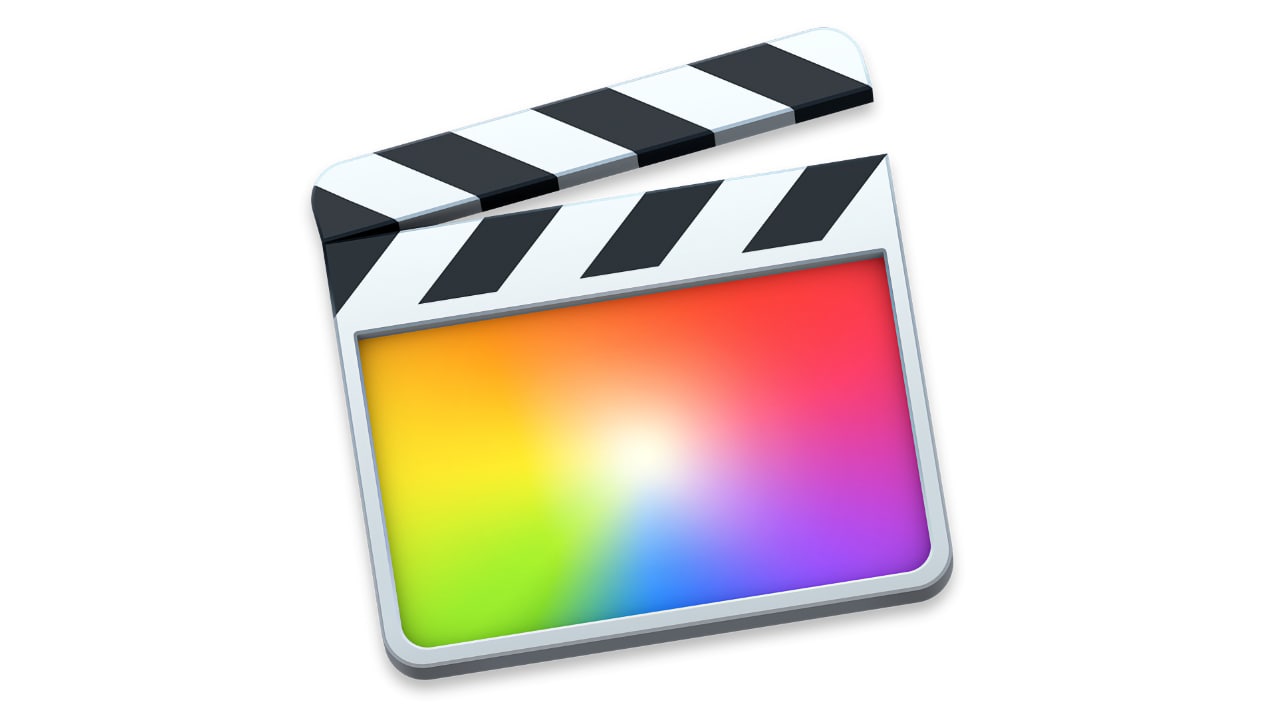
Final Cut Pro made its public debut *last century* at NAB Show 1999. Heath McKnight on 25 years of Apple’s low-cost and ground-breaking non-linear editor.
It’s hard to believe, but Final Cut Pro, Apple’s ubiquitous NLE, is now 25 years old. When it debuted in 1999, it helped spark a revolution that helped democratize both film and video production, allowing one to purchase a state-of-the-art NLE without paying tens of thousands of dollars. This is the history of Final Cut Pro and where it’s at today in the world of post-production.
Final Cut Pro: humble beginnings
In the mid- to late-1990s, the post-production and NLE software landscape was pretty barren compared to today. Many post houses and broadcast stations and networks were starting to transition to digital video and non-linear editing from tape-to-tape. Among the available apps were Avid (which was extremely expensive at the time), Lightworks, Media 100, and Adobe Premiere Pro.
Final Cut Pro began as KeyGrip from Macromedia, developed by a team led by the legendary Randy Ubillos, who was part of the original Premiere Pro development team. While still in development and using Apple’s QuickTime, Macromedia decided to focus on web solutions and looked to sell off its desktop apps. Additionally, the company couldn’t get a proper license for Truevision.
By 1998, KeyGrip was renamed Final Cut and the team showed Apple a private demo at NAB. Cupertino purchased it and the team continued development, including support for FireWire, an important feature as mini-DV and other digital formats were starting to take off.
Apple debuted Final Cut Pro 1.0 at NAB 1999. Consider that Steve Jobs had only been back for about two years and was the interim CEO. The company released the Bondi Blue iMac in 1998 to much fanfare and by 1999, the powerful Bondi Blue PowerMac G3 was unveiled. Suddenly, Apple was in the professional video editing game.
While it would cost thousands of dollars to purchase the hardware and software for a quality NLE (sometimes close to the price of a house), Final Cut Pro cost only $999 and you could buy a quality G3 or G4 Power Mac or PowerBook with FireWire for under $3000 to $5000. This was all a fraction of the cost of a good Avid system.
[Back then when Avid launched Avid Xpress DV, it cost $10,000. The first DS HD system meanwhile was $300,000 at launch. It really was another era. Ed.]
2001-2004: Popularity takes off
Apple held seminars around the world to teach Final Cut Pro and released a video series called Final Cut Pro PowerStart with DV Creators. This helped to spread the word about the new software.
Final Cut Pro quickly ate into Adobe Premiere Pro’s share on Macs, and Adobe quit supporting it on Apple for several years (starting in 2002). Apple released versions 2 and 3 relatively quickly, and adoption increased further.
FCP grew even more popular when filmmakers like Roger Avary (co-writer of Pulp Fiction) and legendary editor Walter Murch began using it and became advocates. It even won an Emmy for technical achievement in 2002.
2003 saw the release of the first HDV camera, the JVC HD10, and in 2004 Sony released the FX1 HDV camera, which was far superior. While FCP couldn’t support native HDV, there were workarounds. This was another milestone on the production world.
Final Cut Express debuted in 2003, a sort of consumer version of FCP and priced more affordably, plus later versions supported native HDV before FCP did. Final Cut Pro HD (ver. 4.5) debuted in April 2004, and was an important step for FCP as more affordable HD cameras were coming into the market.
Meanwhile, somewhere around 2001 Apple released DVD Studio Pro (based on its purchase of DVDirector in 2000). The user interface was difficult and it quickly released version 2 in 2003 with a much improved UI, thanks to acquiring DVD Maestro. Suddenly Apple had a nearly complete post-production suite of apps. It just needed quality audio and color grading software to complete the set.
2005-2009: Final Cut Studio
Final Cut Pro 5 debuted in 2005 and supported HDV and Panasonic’s P2 format (HD), which was one of the first tapeless cameras. At NAB 2005, Final Cut Studio was released as a full post-production suite of software and by 2006, it was the only way you could purchase FCP. It also shipped with Motion, DVD Studio, and Soundtrack Pro (introduced in 2004 with Compressor), Apple’s professional music composition and audio editing software. Additionally, Apple moved away from the PowerPC to Intel chips in 2005 and 2006.
By 2007, according to SCRI, Final Cut Pro held a massive 49% professional video editing market share in United States. Also in 2007, Apple released Final Cut Studio 2 and with it debuted its color grading software, Color (formerly FinalTouch from Silicon Color).
The third and last version of Final Cut Studio came out in 2009 (10th anniversary), and was the seventh and final version of FCP featuring the UI we had come to know and love. After this, Apple did a complete ‘tear down’ and introduced Final Cut Pro X.
It should be noted that, by that time, FCP was a highly regarded and respected NLE, and movies cut with it won Oscars, Emmys, and more.
Final Cut Pro X launches to controversy
At NAB 2011, Apple introduced Final Cut Pro X, with a completely new user interface featuring the Magnetic Timeline, background rendering, 64-bit support, and much more, and all for $299. The company also eliminated DVD Studio Pro, Soundtrack Pro, and Color, although elements of each could be found in FCP X. Apple also slashed the prices of Compressor and Motion down to $49 each, giving a nearly full post-production suite of software for under $400.
The post-production world wasn’t kind and the reaction when it ‘shipped’ in June 2011 was swift and negative. Even Conan O’Brien’s editing team made a video mocking it. Some even called it iMovie Pro since the UI was similar. You couldn’t open FCP 7 projects (until Intelligent Assistance introduced 7-to-X and X-to-7). Adobe began a massive marketing push of Premiere Pro and some FCP users made the switch. Professional industry use declined swiftly.
For the record, I actually liked it, but it took me re-thinking everything I knew about non-linear editing to use it. At that point, I had been an FCP editor since 1999 and version 1.0. You can read about my thoughts on FCP X here and here.
Final Cut Pro today
Apple has long dropped the X in Final Cut Pro, but it still maintains the magnetic timeline, background rendering speeds, and other great features and improvements. While it competes against Premiere Pro, DaVinci Resolve, Avid, VEGAS Pro, and others, FCP is still a popular NLE. Apple even debuted FCP for iPad as a paid subscription back in 2023.
Final Cut Pro doesn't crash, even when editing 8K video, and rendering is fast, especially on Apple silicon, first introduced in 2020.
It is, in other words, an extremely capable NLE even quarter of a century on. Back in 2017, it was reported that Final Cut Pro had over 2 million users. This seems to be a common number; Adobe says it has 2 million for Adobe Premiere Pro, DaVinci Resolve has claimed the same. But the market has shifted enormously over the past seven years, with both subscription based offerings (Adobe) and extremely powerful free ones (Resolve). There are also ever more capable web-based entrants hitting the market almost every day, some optimised for social media content, others looking to fill the long-form niche.
In 2022, Apple responded to an open letter from professional editors requesting that the company promote FCP and add more features needed for high-end projects. Apple promised consultations, more training, major production support and workshops, and more.
“We would love to work with you to help support your film and TV projects, and we will continue to explore opportunities that allow us to better connect and foster important dialogue with our devoted community of users going forward,” it said.
We will have to see if it marks the software’s 25th anniversary with anything suggesting another quarter century of innovation.
Tags: Post & VFX Apple Final Cut Pro


Comments